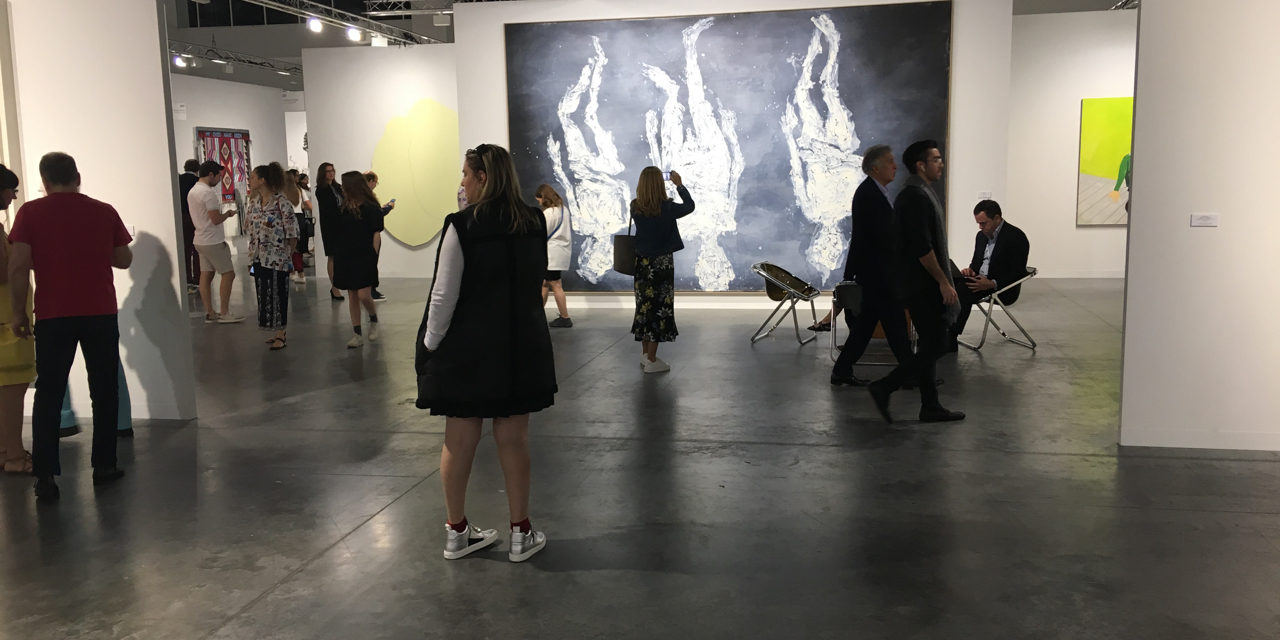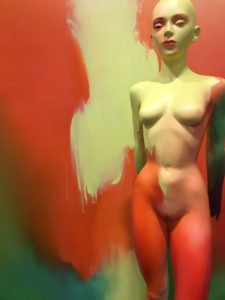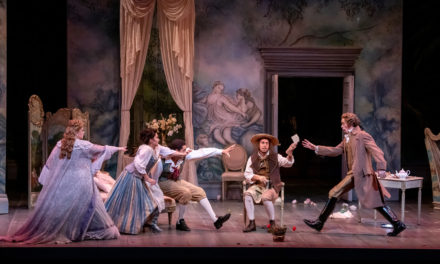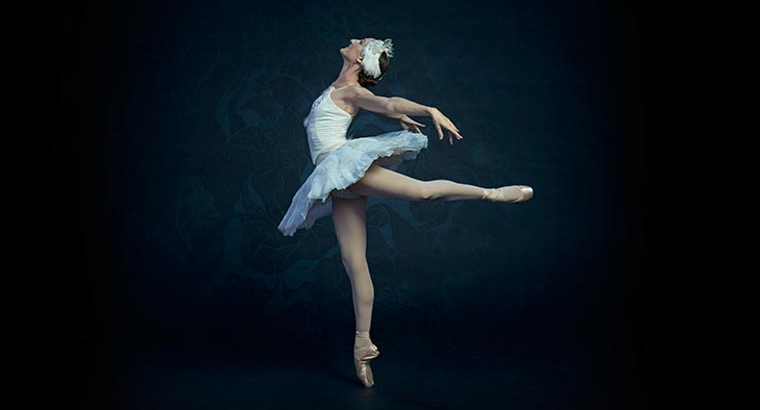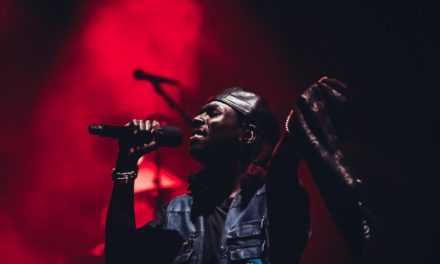The 2018 edition of Art Basel Miami Beach (ABMB) was a lush and triumphant event replete with promising young artists, old masters, and the occasional aesthetic surprise. It is no secret that the Miami Beach version of the Art Basel Art fairs, with the others being based in Basel and Hong Kong, is notable and celebrated for its star power, the eroticism of the tropical surroundings, and the proximity to New York.
But the true value of ABMB is of an educational variety, particularly to those on the fringe (or beyond it) of the contemporary art economy. For art students, casual art lovers, and artists who have not yet cracked the secret codes of art galleries, curators and collectors, Art Basel Miami Beach represents a living, three-dimensional intensive seminar on the workings and products of contemporary painting, sculpture, photography and other forms of visual creativity within the gallery system. Between the main fair taking place at the Miami Beach Convention Center and the many satellite fairs spread out across Miami and Miami Beach, the event now known as Art Week has become the single most important contemporary art phenomenon in the United States.
Sales are made.
Relationships are established.
Networks are develped.
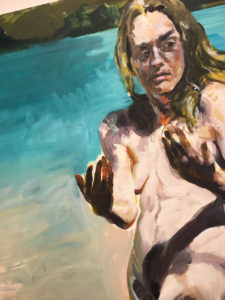
A Painting by Eric Fischl
Indeed, AMBM has become a global, cultural phenomenon transcending the elite specialization of contemporary cultural events and becoming almost banal in that it attracts many people with zero knowledge or interest in contemporary art. It’s allure is as much social as it is artistic.
Both in the Miami area and nationally, AMBM is now the premier contemporary art event of the season, complete with exclusive parties, private openings, and decadent nights out featuring both Hollywood celebrities and the requisite financial power players. The aura of this fair is indeed what makes it a true phenomenon, something beyond the scope of the visual art market.
The word is spectacle.
Art Basel Miami Beach is a fitting testament to the spectacular financial moment we now find ourselves in. The moment is a spectacle because of the enormity of wealth on display at the Miami Beach Convention Center and across South Beach. The moment is a spectacle because it exists alongside the rising rates of capital inequality, political upheaval, and the general breakdown of the American body politic.
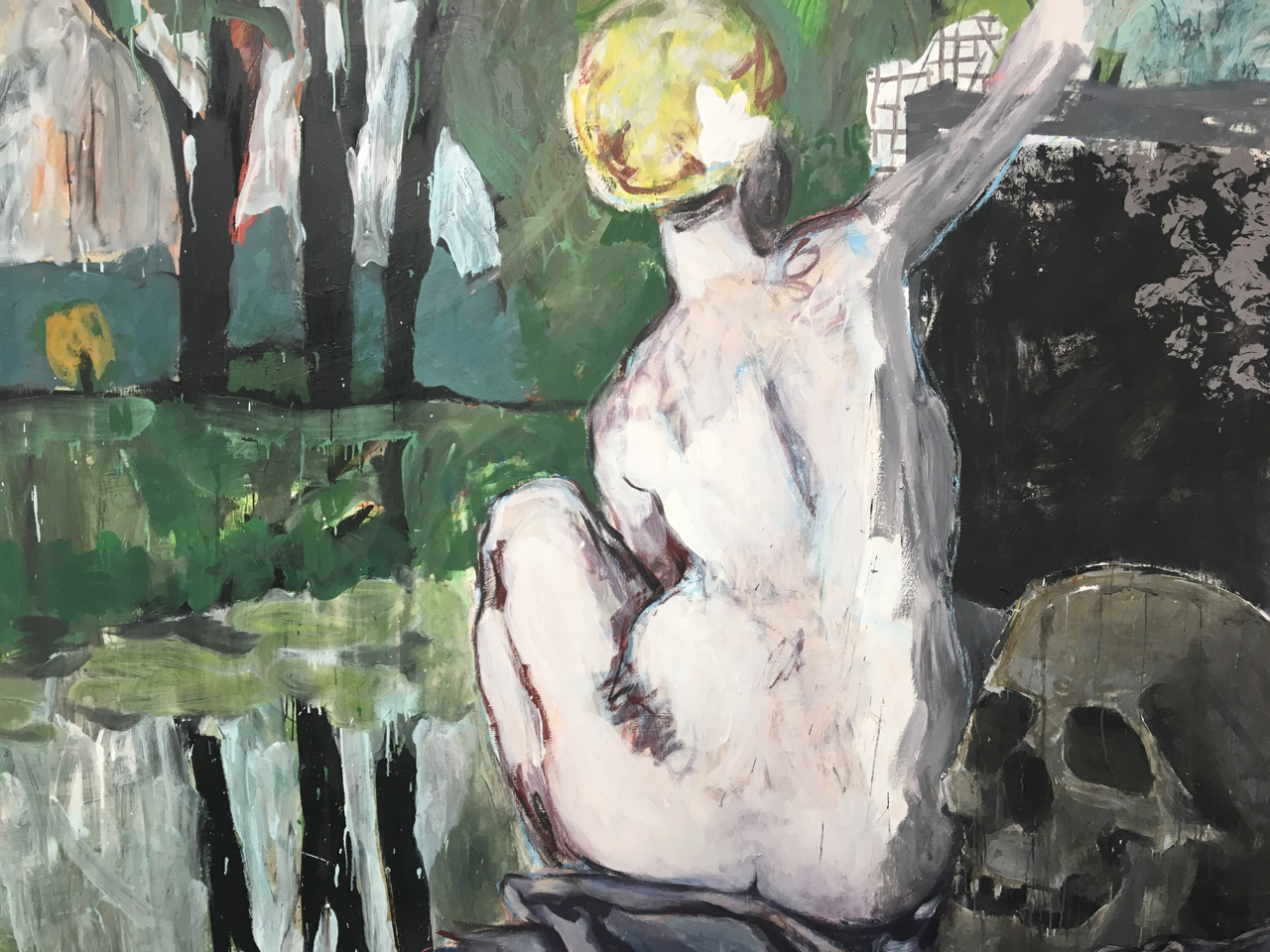
A Painting by Markus Lupertz at Michael Werner
Each of these phenomena, so delicately intertwined, so positively lurking behind the stage of Miami Beach’s grand art party, is the dark dream, the subconscious desire of capitalism’s bad faith. The Miami Beach art spectacle exists as the ultimate cultural fantasy, offering the illusion of intellectual sophistication and artistic sagesse without effort, without pain, and without self-examination.
The 2018 version of this annual exploit would countenance an exquisite week of delicious Miami weather: sunshine, cool breezes, dramatic skies and rippling palm fronds in the twilight of vainglorious desire. In short, it is an event not to be missed by anyone in the visual culture world.
Highlights from the 2018 version include The Michael Werner Gallery‘s show of works by Markus Lupertz and Per Kirkeby, Proyectos Monclova in Mexico City, and Frederic Snizter in Miami. Galleries from cities as far-flung as Los Angeles, Paris, Miami, New York, San Francisco, Buenos Aires, Berlin, Sao Paulo, and Madrid were among those present for specialized shows within unique conceptual enclaves at the main fair.
Art Basel Miami Beach goes to great lengths to offer films and lectures, panel discussions and curated specialized installations to create a counter-weight to the commerce-heavy feel of the convention center experience.
For younger artists who may not possess the opportunity for regular visits to New York, Los Angeles, London and Paris, the main worth of Art Basel Miami Beach is its opulent offerings of painters and sculptors from around the world and their gallery representatives. The fair and its many satellites become an immersive private seminar in contemporary art.
I saw work with conflicting and dissonant impulses, paintings made in haste calling out coy seduction in the manner of an awkward 15-years-young girl on the cusp of womanhood. I experienced conceptual sculpture and shiny art objects whose only purpose is status recognition for millionaires. I witnessed sincere attempts at greatness that fell a little short along with one-off soliloquies by old masters on the doorstep of physical mortality.
There is no single style or movement to qualify or categorize contemporary art today and Miami Beach’s art fairs were a testament to this pluralism, at war with itself, at war with sincerity and beauty and so heavily clogged with the miasma of bad faith and despair.
Contrast the display of cynicism and cultural immaturity inherent in Miami with the Venice Bienale and its attempt at a global art Olympiad based on ideas and visions that encompass more sociological and political concerns as much as aesthetic movements… In this contemplation one may begin to meditate on the proverbial coin: two sides of monetarism, two sides of one silver piece with the Venetian obverse a more political engagement thanks to the unique pavilions of each country and the assemblage of international side-projects. What makes the Venice Bienale an interesting contrast to Art Basel Miami Beach is that it is largely state-sponsored culture, albeit in close concert with the machinations of the contemporary gallery industrial complex.
In both cases the events are inseparable from the sensuality, people-watching, and social positioning of their art market aura and aquatic surroundings with Miami being the future and the present in all its display of crass wealth and Venice, ever elegant and refined, the traditional venue for the sole truly global contemporary art event not explicitly linked to the gallery structure though it is indeed implicitly part of the 1% culture factory.
